The watchmakers at Porsche Design have once again turned to the Porsche automobile brand for inspiration in developing the brand’s innovative new chronograph wristwatch series, called Monobloc Actuator, which features push-buttons integrated seamlessly into the silhouette of the case. The slide valves on the Porsche 911 RSR’s racing engine provided the blueprint for the watch’s signature feature: the multiply mounted rocker switch of the single, integrated pusher, flush with the right side of the case, which stops, starts and resets the chronograph function while also preventing moisture from penetrating the case during operation. The 45.5 mm case is made of titanium, a material that Porsche Design was among the first to use in watchmaking, as early as 1980.
The movement is the self-winding chronograph caliber ETA Valjoux 7754, with a 48-hour power reserve. The dial features a 30-minute chronograph counter at 12 o’clock, a 12-hour counter at 6 o’clock, “function indicator” at 9 o’clock (basically a redesigned running seconds disk that lets the wearer know the movement is working), and date indication at 4:30. Like any chronograph watch with an auto-racing pedigree, it also includes a tachymeter scale, here printed on the dial’s outer edge. The recessed bezel around the dial has an inscribed 24-hour GMT scale, upon which a center-mounted, triangle-tipped GMT hand indicates a second time zone.
Both versions of the Porsche Design Monobloc Actuator with glass-bead-blasted titanium cases are available with matte black or deep blue (pictured) sunburst-effect dials, and on either a black rubber “LaserFlex” strap or a titanium link bracelet. All models have screw-down crowns with a dashboard-inspired knurled pattern; hard-coated, scratch-proof sapphire crystals with double-sided anti-glare treatment over the dials; and screw-down casebacks with tinted sapphire crystals to show off the movements. For more details, other versions, and a short video of the chronograph in action, click here.
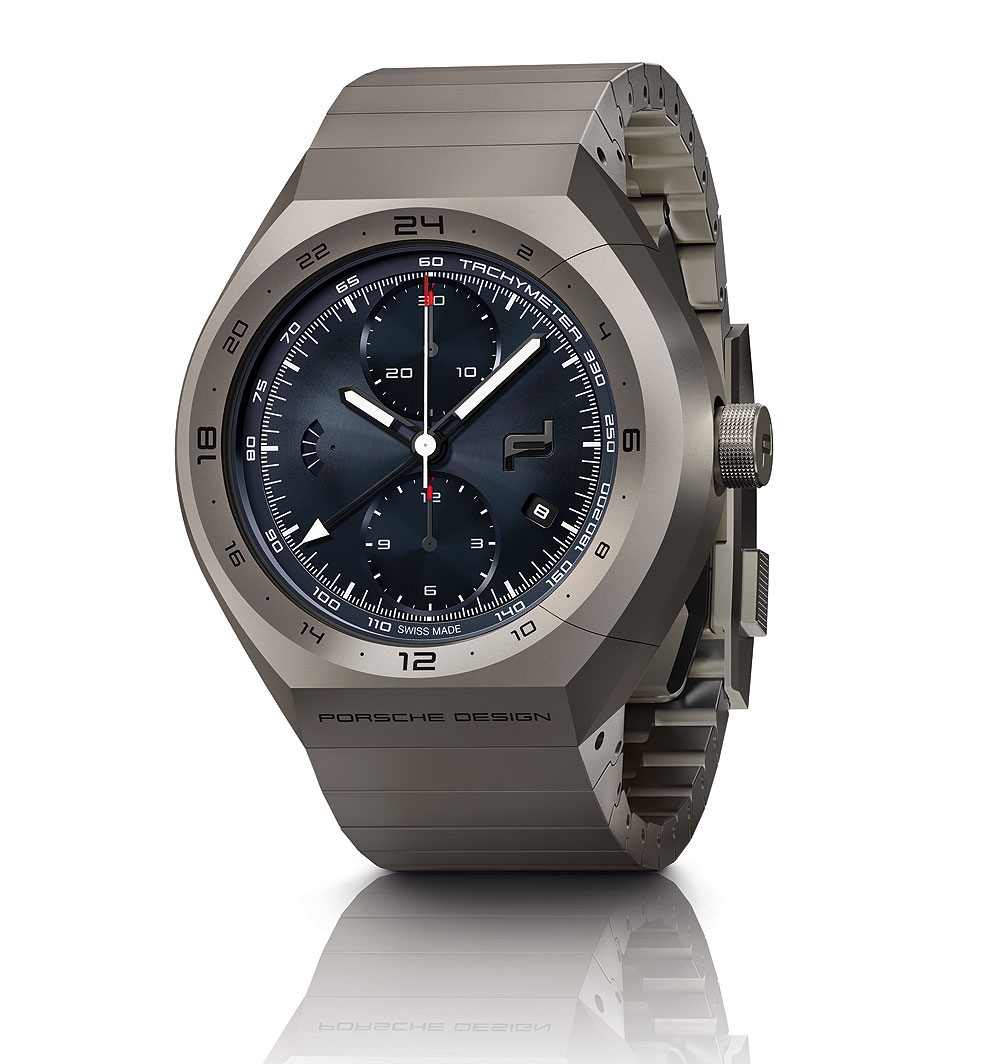
The Tudor Heritage Black Bay Chronograph adds a new, sporty complication to the popular Black Bay collection, and does so with the aid of a new movement sourced not from big brother Rolex but from stopwatch specialist (as seen above) Breitling. Outwardly, the watch has all of the Black Bay’s vintage-inspired features — the hallmark “Snowflake” hands, the domed dial and crystal, the large winding crown from the 1958 Tudor “Big Crown” dive watch, an engraved, black lacquered Tudor rose emblem on the screw-down crown. These characteristic elements are joined by two hollowed-out subdials at 3 o’clock and 9 o’clock for the 45-minute chronograph counter and running seconds indication, respectively, and a date window at 6 o’clock. The 41-mm, 200-meter water-resistant stainless steel case is topped by a fixed, circular satin-brushed bezel with an engraved tachymeter scale. The chronograph pushers flanking the crown are said to have been inspired by those used on early Tudor chronograph watches.
On the inside is the new Caliber MT5813 movement, based on Breitling’s automatic, integrated-chronograph Caliber B01. A recent collaborative effort by the two brands has yielded a two-fold result thus far. Tudor gets the B01 Caliber on which to build its first “independent” chronograph movement, while Breitling in turn acquires the use of Tudor’s own in-house base movement, Caliber MT5612, for its Superocean Heritage II model (covered here). Tudor Caliber MT5813 has all the attributes of the B01, including bidirectional winding, a column-wheel-controlled chronograph mechanism with a vertical clutch, a 70-hour power reserve in a single mainspring barrel, a non-magnetic silicon balance spring, a 28,800-vph frequency, and a COSC chronometer certification. The Tudor Black Bay Chronograph is available with either a brown leather strap or a steel bracelet inspired by the folding riveted bracelets on Tudor watches produced in the 1950s and 1960s. Click here for more details and prices.
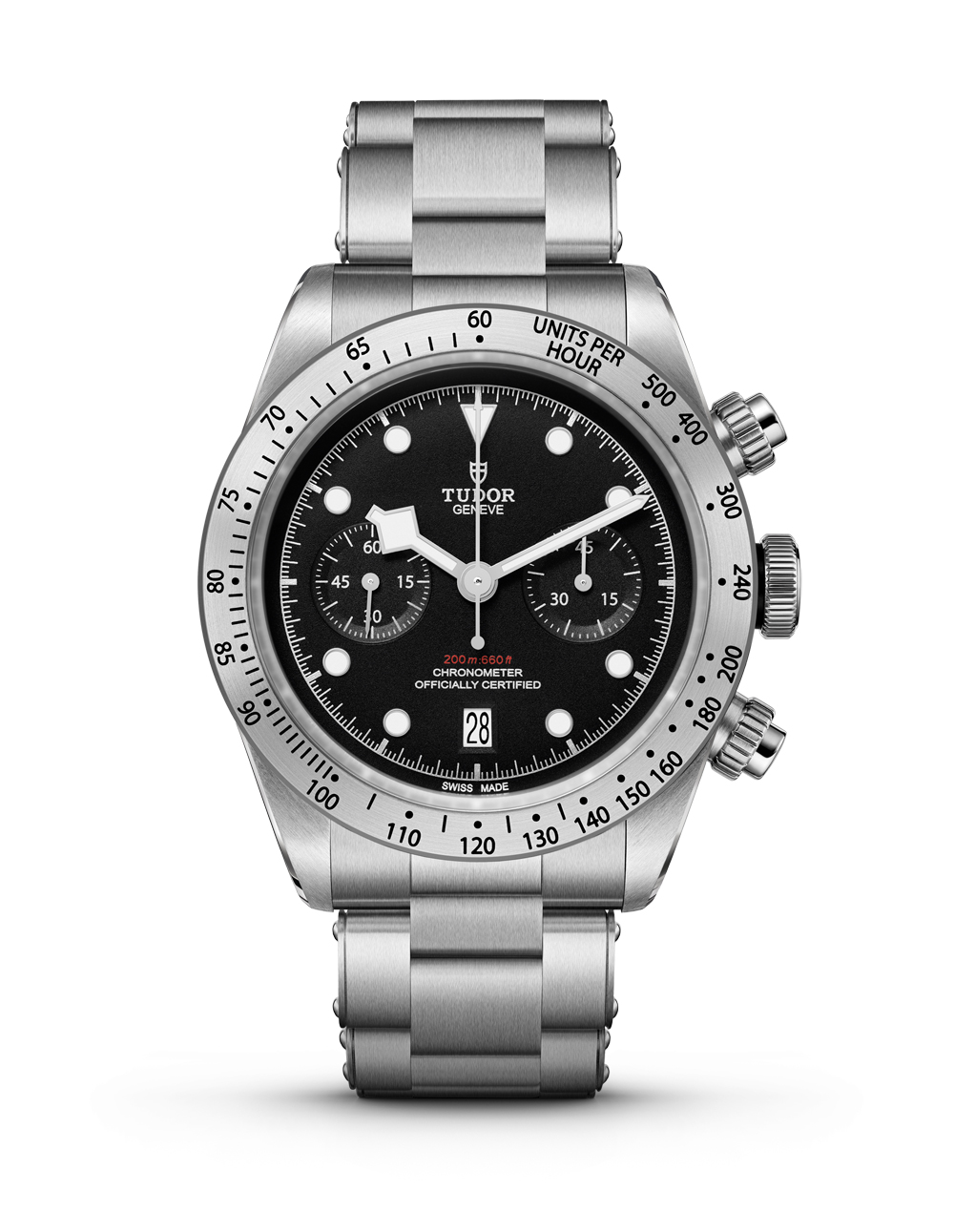
Zenith capitalized on its reputation as the king of high-frequency — and the originator of the groundbreaking El Primero automatic chronograph movement in 1969 — with the introduction of the Zenith Defy El Primero 21. The watch’s new movement, automatic caliber El Primero 9004, has two escapements: one for the time, beating at 36,000 vph (5Hz), and one for the chronograph, beating at a frequency of 50 Hz, or 360,000 vph, allowing the watch to display elapsed times to 1/100ths of a second on the central dial. It also boasts a balance spring made of carbon-matrix carbon nanotube composite, a Zenith-patented material that is resistant to gravity and temperature fluctuations and anti-magnetic to 15,000 gauss.
In addition to central hours and minutes, the dial hosts a small seconds subdial at 9 o’clock; a 1/100th-second central chronograph hand; a 30-minute subdial at 3 o’clock; seconds and 1/10th second readout at 6 o’clock, and a percentage indication of the chronograph power-reserve at 12 o’clock. A patented chronograph-reset control mechanism composed of three heart pieces and an exclusive starter mechanism allow simultaneous resetting of the seconds as well as tenths and hundredths of a second. Zenith’s El Primero Caliber 9004 is also COSC-certified and, because of the two escapements, holds a 50-hour power reserve for the time as well as a separate 50-minute power reserve for the chronograph. The 44-mm case is available in three options: titanium, priced at $9,600; titanium with an openworked dial for $10,600; and ceramicized aluminum with an openworked dial for $11,600.
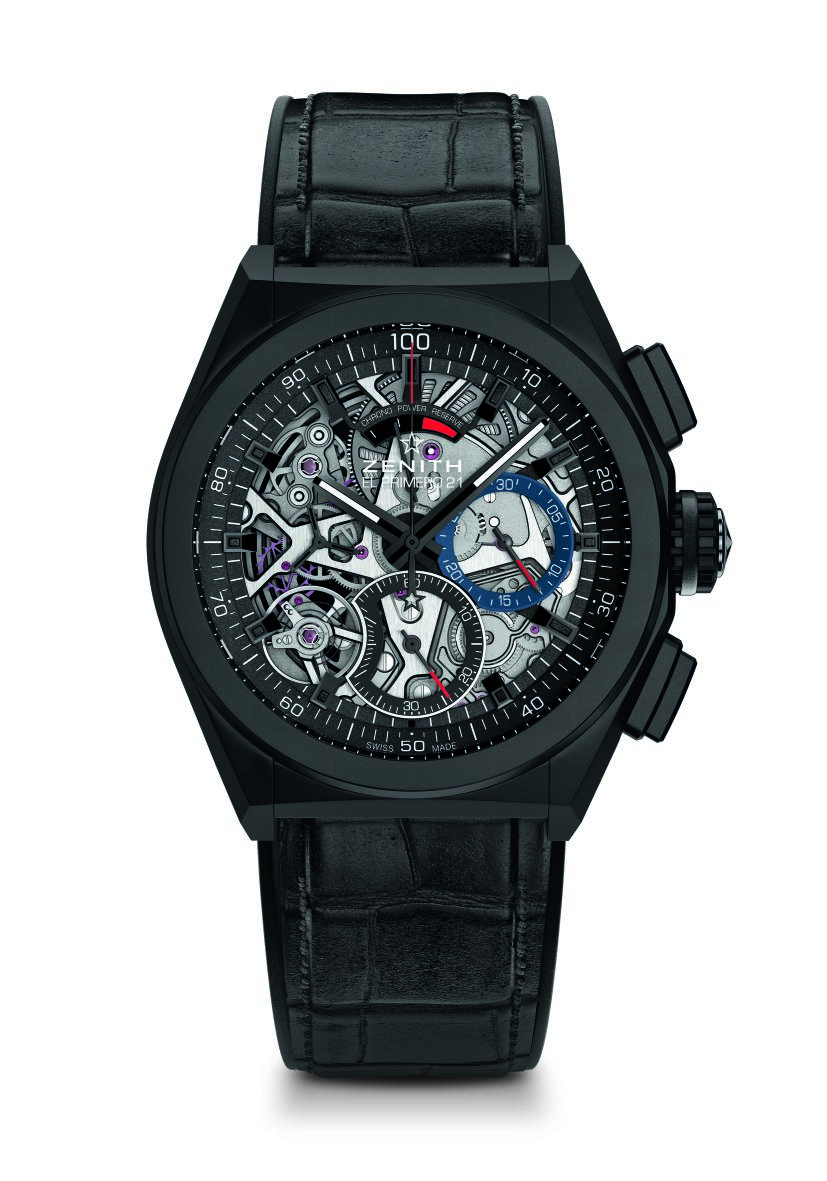


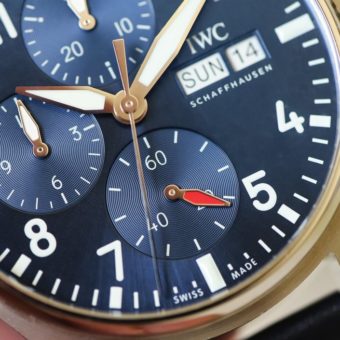
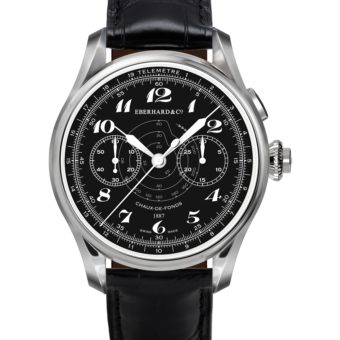
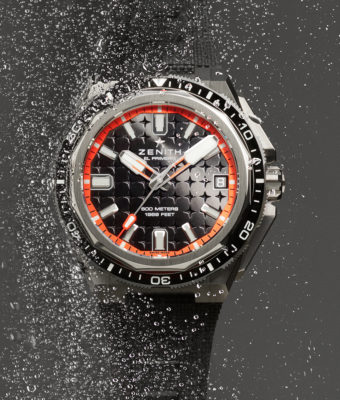
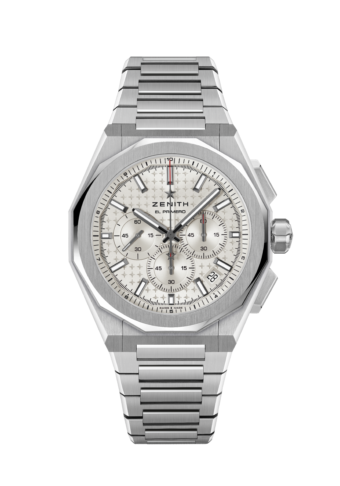
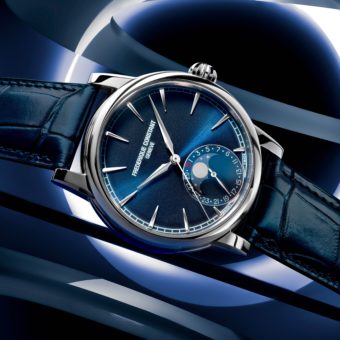
I feel so sorry for Zenith.
I almost didn’t get to read about the Zenith…